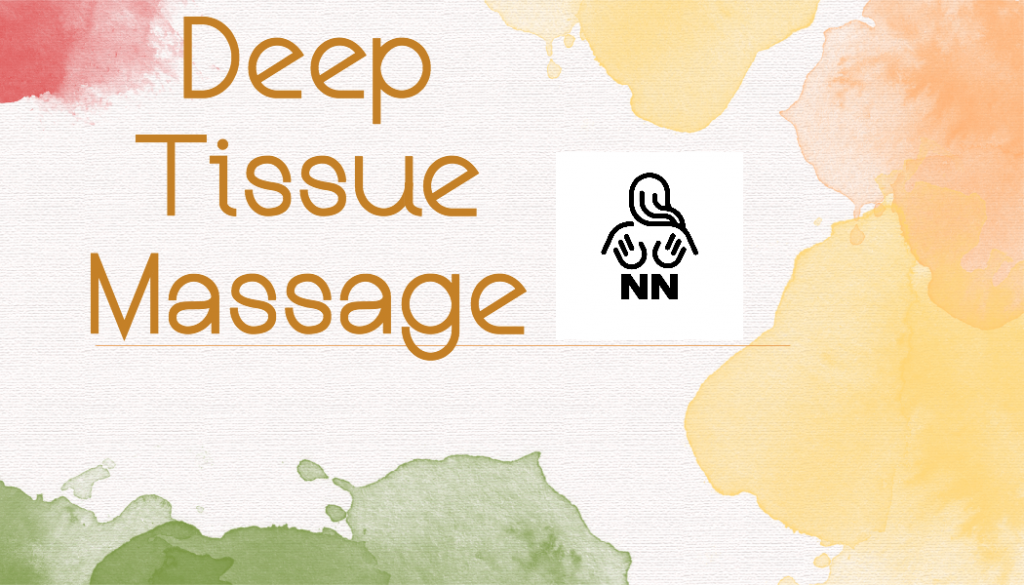Deep Tissue Massage: What It Is and What to Expect
Massage therapy has been around for thousands of years, and it continues to be a popular way to alleviate stress and improve overall well-being. One type of massage that has gained popularity in recent years is deep tissue massage. In this article, we’ll take a closer look at what deep tissue massage is, how it works, and what to expect during a session.

Deep tissue massage is a type of massage therapy that is designed to focus on the deeper layers of muscles and connective tissue in the body. This technique is often used to alleviate chronic pain, muscle tension, and improve mobility. If you’re interested in deep tissue massage, here’s what you need to know about what it is and what to expect.
What Is Deep Tissue Massage?
Deep tissue massage is a type of massage that uses slow, deep strokes and intense pressure to reach the deeper layers of muscle and connective tissue. The therapist will use their fingers, thumbs, forearms, and elbows to apply pressure to specific areas of tension, knots, or adhesions in the body.
While deep tissue massage is similar to Swedish massage, it is typically more intense and focused on specific areas of the body. Deep tissue massage can be used to help relieve chronic pain, reduce muscle tension, and improve overall mobility.
What to Expect During a Deep Tissue Massage Session?
If you’ve never had a deep tissue massage before, you may be wondering what to expect during your session. Here’s a step-by-step breakdown of what typically happens during a deep tissue massage:
- Intake and Consultation: Before your massage begins, your therapist will talk to you about your medical history, current health status, and any areas of pain or discomfort you’re experiencing. This will help them determine the best course of treatment for you.
- Preparation: Once the intake and consultation are complete, you’ll be asked to undress to your comfort level and lie down on a massage table. The therapist will use a sheet or towel to cover your body and only uncover the area they will be working on.
- Application of Oil or Lotion: To help reduce friction on your skin, the therapist will typically apply oil or lotion to the area they will be working on. This will help them apply the deep pressure needed for the massage.
- Deep Tissue Massage Techniques: The therapist will begin by using lighter pressure to warm up the muscles and gradually apply more pressure as they work deeper into the tissue. They may use a combination of techniques, such as friction, cross-fiber friction, and stripping, to target specific areas of tension or knots.
- Communication with Your Therapist: It’s important to communicate with your therapist throughout the massage. If you’re experiencing discomfort or pain, let them know. They can adjust their technique or pressure to make you more comfortable.
- Post-Massage Care: After your massage is complete, your therapist may recommend specific stretches or exercises to help you maintain the benefits of the massage. They may also recommend drinking plenty of water to help flush out any toxins that may have been released during the massage.
Benefits of Deep Tissue Massage:
Deep tissue massage can offer a variety of benefits beyond pain relief, such as:
- Improved posture and mobility
- Reduced anxiety and stress
- Increased flexibility and range of motion
- Lowered blood pressure
- Enhanced athletic performance
Possible Side Effects:
While deep tissue massage is generally considered safe, it’s important to be aware of the potential side effects, such as:
- Soreness or discomfort for a day or two after the massage
- Bruising or swelling in the area that was worked on
- Headaches or fatigue
It’s important to stay hydrated and rest after your massage to help minimize these side effects.
In conclusion, deep tissue massage is a highly effective massage technique that can provide many benefits, from pain relief to improved mobility and athletic performance. If you’re interested in trying deep tissue massage, be sure to find a licensed and experienced massage therapist who can guide you through the process and help you achieve the best possible results.
